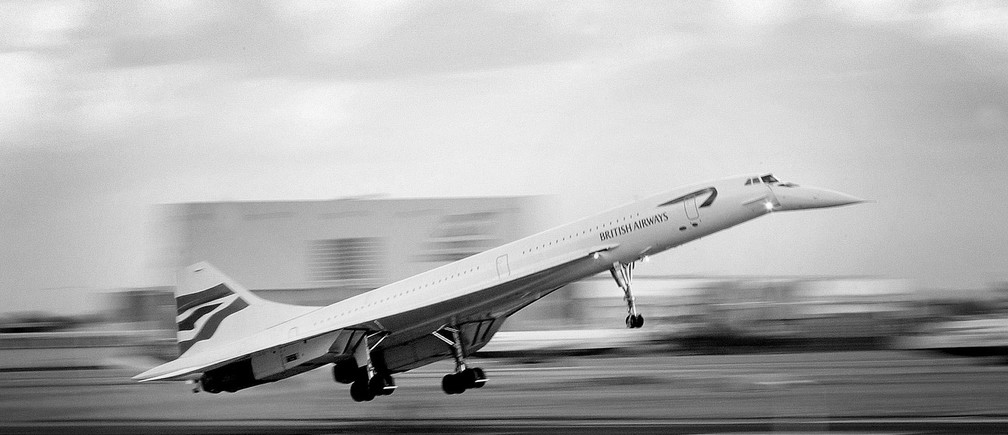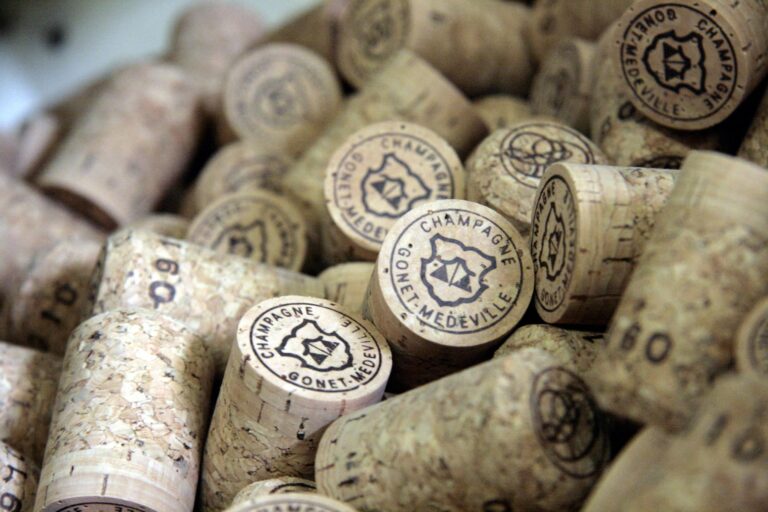INTRO [read the full champagne story]
Estimated reading time: 8 minutes

There is an undeniable romance, a certain frisson, that accompanies the gentle pop of a Champagne cork at 35,000 feet. As the world shrinks below, a flute of finely beaded brilliance seems to encapsulate the very essence of luxury and escape. Yet, for the discerning palate, one accustomed to the symphonic complexities of Champagne in its terrestrial element, the aerial experience presents a unique set of challenges and, indeed, fascinating revelations. The oft-repeated adage that “food and wine taste different in the sky” is not mere fancy; it is a scientific reality that profoundly impacts our appreciation of even the most esteemed cuvées.
The primary antagonists in this high-altitude drama are the significantly reduced cabin pressure and the desert-like aridity. Cabin air pressure, typically equivalent to an altitude of 6,000-8,000 feet, coupled with humidity levels that can plummet below 15% (drier than many deserts), conspire to dull our olfactory acuity and alter our palatal perception. Our taste buds, particularly those responsible for detecting sweetness and saltiness, become less sensitive. Delicate aromas, the ethereal top notes of a young Blanc de Blancs, for instance – those subtle whispers of acacia, white peach, or fresh citrus zest – can be cruelly muted, lost in the desensitising environment.
So, what becomes of our beloved Champagne under such duress?
Firstly, the aromatic profile undergoes a curious transformation. The more fragile floral and primary fruit notes may recede, allowing the secondary (yeast-derived) and tertiary (age-derived) aromas to take centre stage. This is not invariably a detriment. A Champagne with significant autolytic character – those delightful notes of brioche, toasted nuts, warm bread, or even a hint of patisserie – might actually present these facets with greater clarity, as the fruitier foreground is less dominant. I’ve often found that Champagnes with a substantial portion of reserve wines, or those boasting extended lees ageing, can show surprisingly well, their inherent depth and complexity providing a buffer against the sensory dampening.
Secondly, acidity can be perceived with greater keenness. With the fruit expression somewhat diminished and our perception of sweetness reduced, the structural acidity of the wine can feel more pronounced, occasionally even a touch austere. This is particularly true for Brut Nature or very low-dosage expressions, which, while offering crystalline purity on the ground, might demand a more resilient palate aloft. A slightly higher dosage, or a style naturally imbued with richer fruit, can offer a more harmonious balance in these conditions.
Thirdly, the effervescence, that lifeblood of Champagne, can also behave differently. While the physics of bubble formation in lower atmospheric pressure might suggest a more vigorous mousse, the perception can be influenced by the serving temperature and the shape (and material!) of the “glass.” Airlines, bless their efforts, often serve Champagne overly chilled, which can suppress aromatics and deaden the palate. And the vessel! Ah, the vessel. The thick-rimmed plastic or heavy glass tumblers so often encountered are far from ideal, constricting the wine’s ability to breathe and express its full aromatic range.
Navigating the Aerial Cellar: Which Cuvées Soar?
Given these considerations, the choice of Champagne becomes paramount. While one might relish a delicate, laser-focused Salon on terra firma, its ethereal nuances might be partially lost to the cabin’s rigours. Instead, I find myself gravitating towards styles with a certain inherent power and generosity:
- Blanc de Noirs or Pinot-Dominant Blends: The red fruit character and broader palate structure of Pinot Noir (and Meunier) often translate with more conviction at altitude. Think of the vinosity of a Bollinger Special Cuvée, the robust fruit of a Mailly Grand Cru Blanc de Noirs, or even a well-structured Rosé d’assemblage, whose berry notes can pierce through the sensory fog.
- Vintage Champagnes with Bottle Age: Mature vintage cuvées, particularly from warmer years or those with a decade or more of post-disgorgement development, offer a tapestry of complex tertiary aromas – honey, gingerbread, truffle, dried fruit – that are less susceptible to the muting effects of altitude. A 2008 with its remarkable structure and acidity, or a more opulent 2015, if the airline is truly spoiling you, can be a profound experience.
- Richer, Creamier Styles: Champagnes known for their creamy texture and generous mid-palate, perhaps with a touch more dosage or a particular emphasis on Chardonnay from warmer sites (like Montgueux), can offer a more satisfying mouthful. Charles Heidsieck Brut Réserve, with its high proportion of reserve wines and chalky complexity, often performs admirably and, as we shall see, is a welcome sight on several carriers.
The Aerial Cellar’s Brightest Stars for 2025: A Connoisseur’s Guide
As we navigate the skies in 2025, the landscape of in-flight Champagne offerings continues to evolve, with several carriers demonstrating a commendable commitment to quality. It is a joy to observe the “Champagne wars” playing out at 35,000 feet, much to the benefit of the discerning traveller.
- Emirates: This Dubai-based carrier continues its reign as a titan of aerial Champagne service, underpinned by a renewed multi-year LVMH partnership. First Class passengers can anticipate the consistent excellence of Dom Pérignon 2013, with seasonal rotations including the coveted Dom Pérignon Rosé 2008 and the remarkable Dom Pérignon Plénitude 2 (transitioning to the 2006 vintage from mid-year). Their Business Class is by no means neglected, featuring stalwarts like Veuve Clicquot Yellow Label and, seasonally, the Veuve Clicquot Vintage Blanc 2015, alongside Moët & Chandon Brut Impérial. Their new initiative, pairing dishes specifically with Moët & Chandon in Business Class from May 2025, speaks volumes of their dedication.
- Singapore Airlines: A byword for luxury, Singapore Airlines curates its list with meticulous care, even conducting tastings in simulated altitude conditions. Their First Class and Suites cabins, on select routes, boast an exclusive agreement to pour the legendary Louis Roederer Cristal 2015 – a truly exceptional offering. This is often complemented by the ever-reliable Krug Grande Cuvée and sophisticated vintage expressions like Charles Heidsieck Blanc des Millénaires 2007.
- Japan Airlines (JAL): For those fortunate enough to grace JAL’s First Class on certain routes, the whisper of Champagne Salon becomes a reality – a rare treat indeed, given its scarcity and prestige. Alternative First Class offerings include the distinguished Billecart-Salmon Cuvée Elisabeth Salmon Rosé 2012. Business Class travellers can delight in the consistent quality of Charles Heidsieck Brut Réserve.
- British Airways: The venerable British carrier has made impressive strides. Their First Class showcases a rotation of genuine prestige cuvées: the elegant Laurent-Perrier Grand Siècle made its return in March, to be followed by Lanson NOBLE Champagne 2008 (from July), the powerful Bollinger La Grande Année 2015 alongside Bollinger PN AYC18 (from October), and looking ahead to January 2026, Rare Champagne and Charles Heidsieck Blanc des Millénaires. Notably, BA is pioneering the inclusion of prestige cuvée English sparkling wines in First, such as Nyetimber’s 1086, offering a patriotic and increasingly impressive alternative. Their Club World (Business Class) also features a commendable rotation of English sparkling wines.
- Air France: True to its heritage, Air France ensures Champagne is available on all long-haul flights. Their Business Class often features the excellent Charles Heidsieck Brut Réserve, a wine I consistently find punches above its weight.
- Delta Air Lines: Celebrating its centennial year, Delta has partnered with Maison Taittinger. Passengers in Delta One cabins on international flights can enjoy the balanced and refined Taittinger Brut la Française throughout 2025.
- United Airlines: United Polaris Business Class passengers are now treated to Laurent-Perrier La Cuvée Brut NV, a significant upgrade and a welcome sign of their commitment to enhancing the premium experience. United is notably the only U.S. carrier to pour this particular non-vintage.
- Qatar Airways: Often lauded for its Qsuite Business Class, Qatar Airways typically presents a choice of two Champagnes, with Charles Heidsieck Brut Réserve being a frequent and welcome appearance.
The Art of Enjoyment at Cruising Speed
Beyond selection, a few practical considerations can enhance the experience. If served too cold, cup the bowl (if one is provided that allows it!) in your hands for a few minutes to gently raise the temperature, coaxing out the aromatics. If possible, advocate for a proper glass; some premium cabins are now equipped with surprisingly decent stemware.
Patience is also a virtue. Allow the Champagne to sit in the glass for a few moments longer than you might on the ground. Let it acclimate, let its aromas unfurl as best they can in the dry air.
Food pairing takes on a different dimension too. Airline cuisine, often designed with amplified flavours to combat the same sensory dulling, can sometimes overpower more delicate wines. However, a richer Champagne can stand up surprisingly well to, say, a mildly spiced chicken dish or even a creamy pasta. Often, though, I prefer to savour the Champagne as a contemplative aperitif, a moment of liquid gold amidst the clouds.
In conclusion, while the environment of an aircraft cabin is undeniably challenging for the nuanced appreciation of premium Champagne, it is by no means a lost cause. With careful selection, focusing on Champagnes of inherent richness, complexity, and aromatic intensity – and with airlines increasingly investing in truly stellar cuvées – the experience can still be deeply rewarding. It becomes a different kind of tasting, an exploration of how these magnificent wines adapt and reveal altered facets of their personality. For even in these compromised conditions, a truly great Champagne will find a way to whisper, if not sing, of its origins, its craftsmanship, and its enduring magic, transforming a mundane journey into a moment of celestial delight. And that, my friends, is always worth celebrating.






